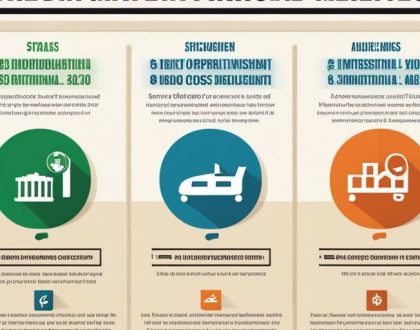What “return” does content marketing bring?

If you’re trying to determine the ROI of content marketing, a crucial question to ask is, what exactly is the “return” in this case? After all, the purpose of content marketing is not to make sales directly. So, does it really contribute to revenue?
Some may wonder if content marketing is optional, especially during tough economic times. Shouldn’t we be focusing on activities that generate income instead?
If you’re asking these questions, then you may not fully understand the value of content marketing. It’s not easy to quantify in monetary terms, but that doesn’t make it any less important.
In another article, I delve further into finding the right metrics to measure content success. I provide additional tips on selecting key performance indicators (KPIs) that help you determine your return on investment.
I also caution against relying on vanity metrics. While easily measurable, they may not provide any meaningful insights. For instance, website traffic may be interesting, but it’s insufficient if not tied to a specific goal.
To calculate your content marketing ROI, you need clear goals. Do you want to increase brand awareness? Do you want to reach a specific audience? Do you want to highlight a particular product or service?
These goals must be measurable and have a defined timeline. Moreover, they should align with your company’s overall strategy. Without clear goals, you cannot identify meaningful metrics. And without metrics, you can’t determine your success.
Understanding Content Marketing ROI
In this article, we will explore the different ways in which content marketing can bring a return on investment. We’ll also discuss how to measure this return and what metrics to track. Here are some of the topics we’ll cover:
What is Content Marketing ROI?
Before we get into the specifics, let’s define what we mean by content marketing ROI. Simply put, it’s the return you get from your content marketing efforts. This return can come in different forms, such as:
- Increased website traffic
- Higher engagement on social media
- More leads generated
- Better search engine rankings
- Increased brand awareness
- More sales or revenue
The return on investment will vary depending on your goals and the type of content you produce. However, the important thing is that you can measure this return and track your progress over time.
The Benefits of Content Marketing
Content marketing offers several benefits beyond the traditional forms of advertising. Here are some of the key advantages:
Builds Trust and Authority
By providing valuable content that helps your audience, you build trust and establish yourself as an authority in your industry. This trust can lead to increased brand loyalty and customer retention.
Generates Leads and Sales
Through content marketing, you can attract potential customers and convert them into leads or sales. By providing helpful and relevant content, you can educate your audience and guide them towards your products or services.
Improves Search Engine Rankings
Search engines love fresh, relevant content. By consistently producing high-quality content, you can improve your search engine rankings and increase your visibility online.
Cost-effective
Compared to traditional advertising, content marketing can be more cost-effective in the long run. While there may be some upfront costs, such as hiring writers or creating videos, the benefits can continue to accrue over time.
How to Measure Content Marketing ROI
Now that we’ve covered the benefits of content marketing, let’s discuss how to measure your ROI. Here are some metrics to consider:
Traffic Metrics
Website traffic is one of the most common metrics used to measure content success. However, it’s important to look beyond just the number of visitors. You should also consider:
- Time on site
- Pages per session
- Bounce rate
- Source of traffic
By looking at these metrics, you can determine which content is resonating with your audience and adjust your strategy accordingly.
Engagement Metrics
Engagement metrics help you understand how your audience is interacting with your content. These metrics include:
- Social media likes, comments, and shares
- Video views and watch time
- Email open rates and click-through rates
By tracking these metrics, you can gauge how well your content is resonating with your audience and adjust your approach if necessary.
Lead Metrics
Lead metrics help you track how many leads your content is generating. These metrics include:
- Form fills
- Newsletter sign-ups
- Whitepaper downloads
By tracking these metrics, you can see which pieces of content are driving the most leads and adjust your content strategy accordingly.
Sales Metrics
Sales metrics help you track how much revenue your content is generating. These metrics include:
- Online sales
- Offline sales
- Customer lifetime value
By tracking these metrics, you can see which pieces of content are contributing the most to your bottom line and adjust your content strategy accordingly.
Conclusion
Content marketing offers numerous benefits to businesses, from building trust and authority to generating leads and sales. However, measuring the return on investment can be challenging.
To measure your content marketing ROI, you need to have clear goals, defined metrics, and a way to track your progress over time. By doing so, you can determine which pieces of content are contributing the most to your bottom line and adjust your content strategy accordingly.
Remember, content marketing is not optional. It’s an essential part of any modern marketing strategy, and the return on investment can be substantial if done correctly.
Muhammad
I am a PHP and WordPress web developer with over 5 years of experience in web development. I specialize in creating responsive websites for my clients. My expertise lies in various web languages including HTML, HTML5, XHTML, Bootstrap, CSS, CSS3, AJAX, JavaScript, jQuery, PHP, and SQL. In addition to my web development skills, I also have CMS skills with WordPress and can convert PSD files to HTML.
Recommended Posts

Financial Aspects of Doing Business in Malta
July 26, 2024

Sportradar Integrates Live Data into Video Ads
July 26, 2024

Casino999.dk & Delasport Enhance Sports Betting
July 26, 2024



